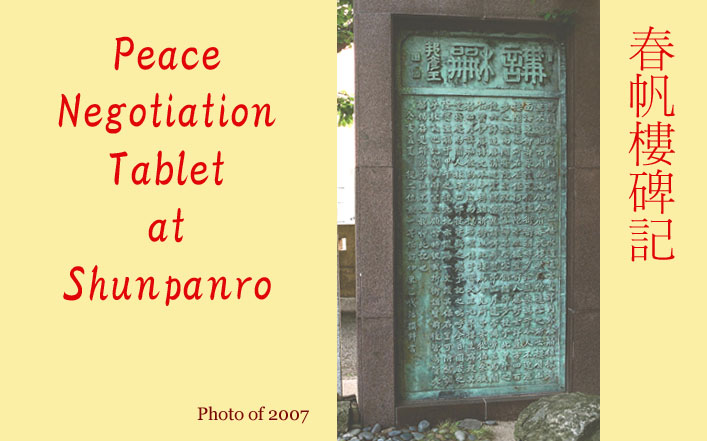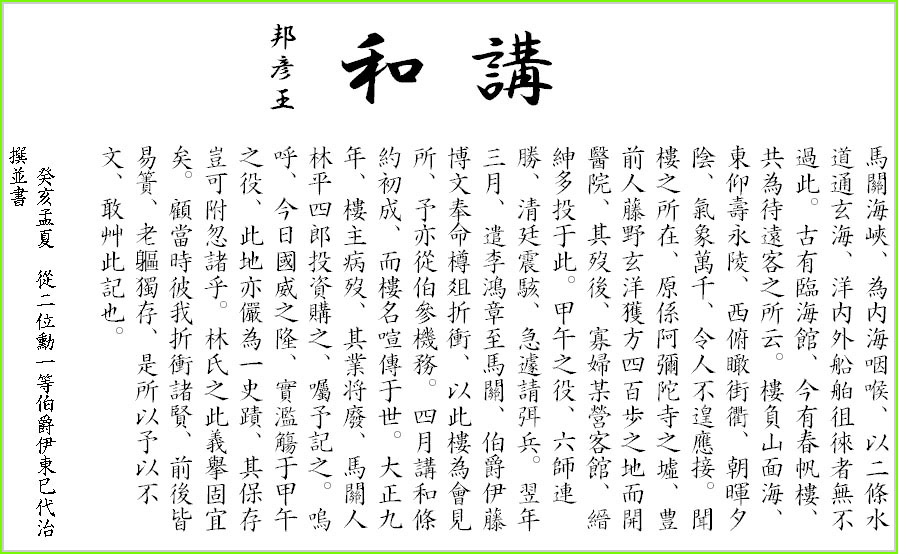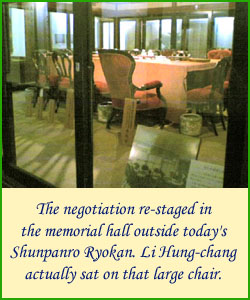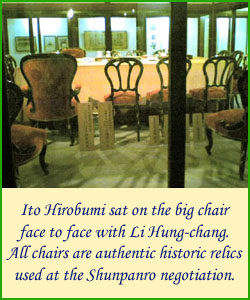


The Strait of Shimonoseki is the throat of the Inland Sea. With the latter's north water channel and central water channel1 leading out to the Genkai Sea, vessels navigating inwards from or outwards to the Genkai Sea pass through the strait without exception. In ancient times there was Rinkaikan, now there is Shunpanro: both being said to be guesthouses for faraway visitors. Standing against the hill and looking out at the sea, Shunpanro faces up towards the tomb of the juvenile Emperor Antoku2 in the east and overlooks the streets in the west. With the morning sunlight and the evening silhouettes, the myriads of changing vistas make one difficult to attend to them soon enough. I heard that the location of Shunpanro was originally the old site of Amidadera Buddhist monastery. Fujino Genyo of Buzen area acquired a piece of land there measuring 400 steps square, and opened his doctor's office. After he passed away, the widow operated a guesthouse, frequented by high officials. In the Sino-Japanese War [beginning July 1894],3 with our six army divisions4 being all victorious, the Ch‘ing court of China was shocked with fear and hurriedly asked for cessation of hostilities. In March of the following year the court sent Li Hung-chang to Shimonoseki. Count Ito Hirobumi received the order to negotiate, with this guesthouse as the venue. I also accompanied Count Ito to participate in this pivotal process. In April the peace treaty [Treaty of Shimonoseki] was initialed, and the name of Shunpanro became known the world over. In the ninth year of the Taisho period [i.e. 1920], the owner of Shunpanro passed away with illness, and the business was foundering. Hayashi Heishiro of Shimonoseki invested money to buy it, and asked me to write about it. Alas! The magnitude of the nation's prowess of today actually has its source from the Sino-Japanese War [1894-1895]. This location is apparently a historic relic. How can its preservation be left to negligence? This righteous deed of Mr Hayashi is naturally appropriate. Looking around me, the personages of both sides at the treaty negotiation demised one after another. Only my old body remains. This is why notwithstanding my lack of learning I venture to compose this record. Early summer of kigai year [i.e. 1923] Composed and handwritten by Count Ito Miyoji,5 Noble of Junior 2nd Court Rank , First Order of Merit
Original text written in classical Chinese Translated into English by Louis Chor |

|

|

|
NOTES
Romanised Chinese and Japanese personal names follow their native order with family name first.